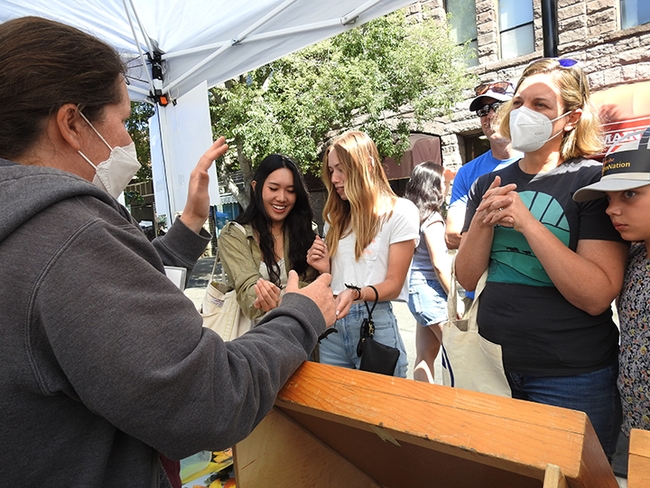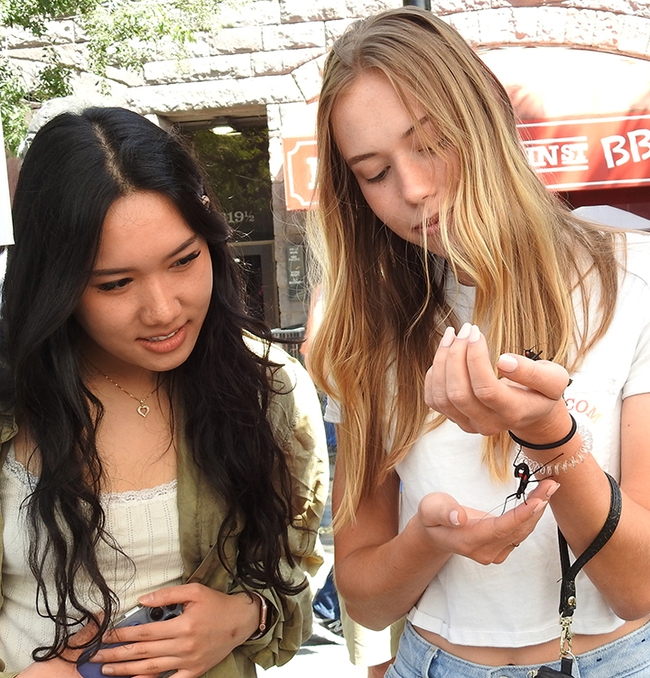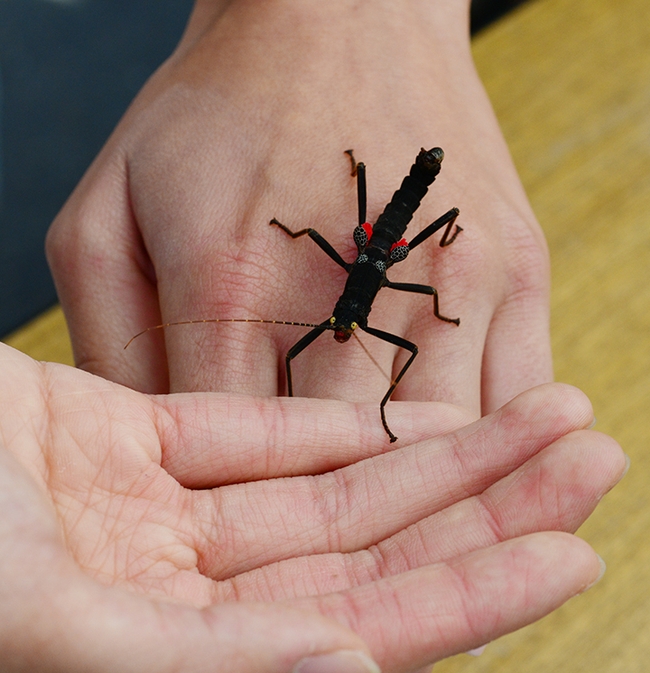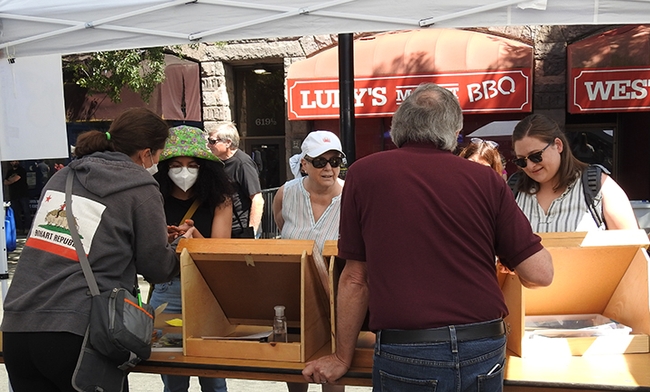- Author: Kathy Keatley Garvey
What's better than seeing a yellow-faced bumble bee, Bombus vosnesenskii, foraging on an neon pink ice plant at Bodega Bay?
Seeing two bumble bees on the same flower.
That's what we observed on a recent trip to Doran Regional Park, Bodega Bay, Sonoma County. It was bumble bee heaven. While conservationists are removing ice plant in one area of the park, bumble bees are foraging on the flowers in another area.
B. vosnesenskii is a native. The ice plant, Carpobrotus edulis, is not. It's from South Africa. Conservationists are removing the invasive ice plant "to allow native, endangered plants to repopulate the area and wildlife to thrive."
But meanwhile, this Bombus keeps buzzing and foraging. (Bombus is derived from a Latin word meaning "buzzing.")
Bumble bees are important pollinators (think "buzz pollination" on tomatoes) but we haven't seen them much around Solano and Yolo counties this year.
Sonoma County, yes! Bodega Bay seems to be an oasis.
And speaking of bumble bees, the Bohart Museum of Entomology sponsors an annual Robbin Thorp Memorial First-Bumble-Bee-of-the-Year Contest to see who can find the first bumble bee of the year in the two-county area of Yolo and Solano.The first to photograph one and email to the Bohart Museum wins. This year UC Davis doctoral candidate Maureen Page of the Neal Williams lab, UC Davis Department of Entomology and Nematology, photographed B. melanopygus with her cell phone camera, and horticulturist Ellen Zagory, retired director of public horticulture for the UC Davis Arboretum and Public Garden, photographed B. vosnesenskii with her Sony camera.
Coincidentally, they each took their photos at exactly 2:30 p.m., Jan. 1 in the 100-acre UC Davis Arboretum and Public Garden as the bees foraged on manzanita.
They represented "a double," too--a double win.
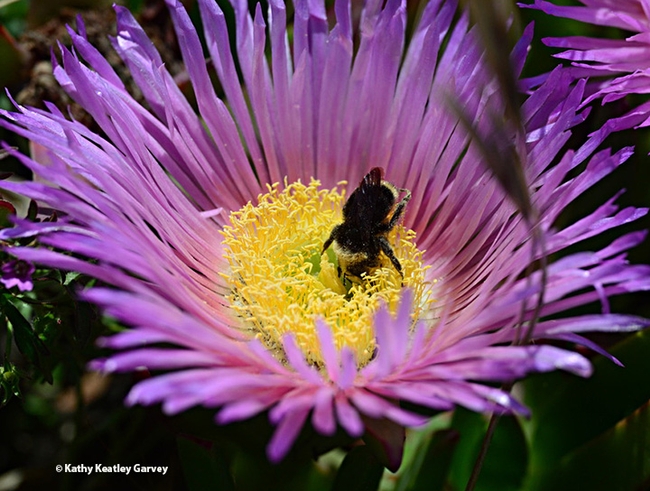
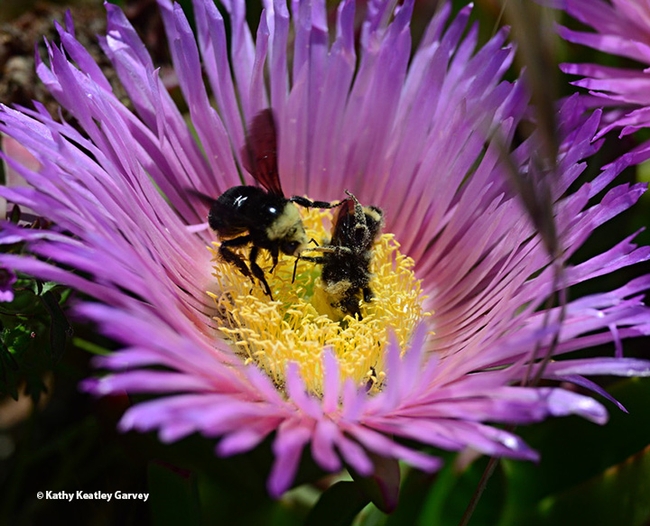
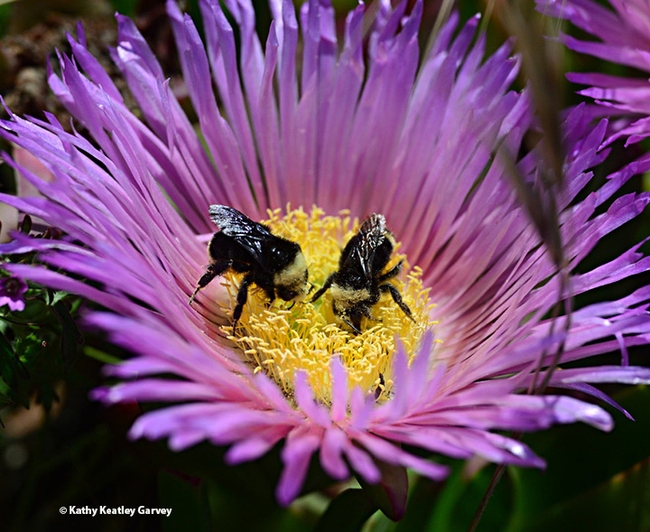
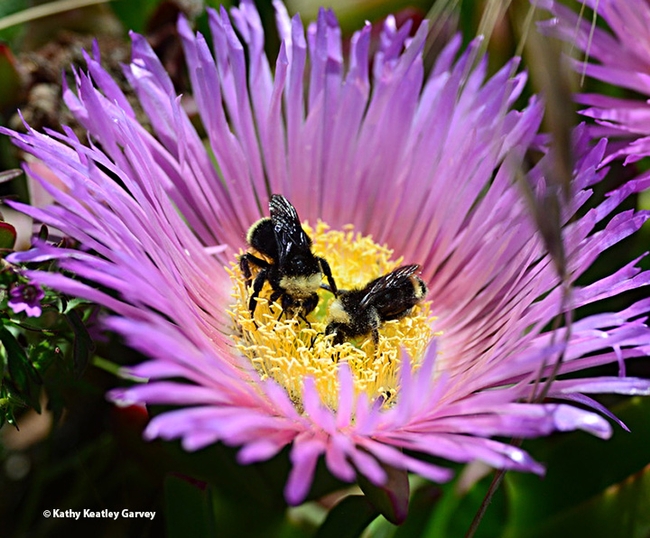
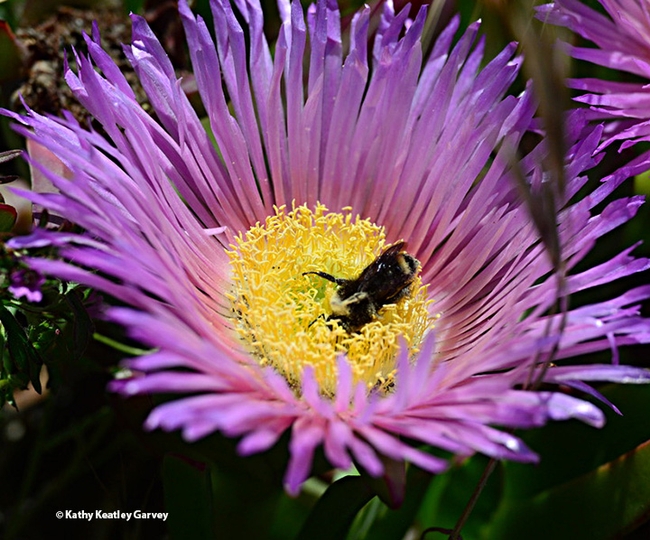
- Author: Kathy Keatley Garvey
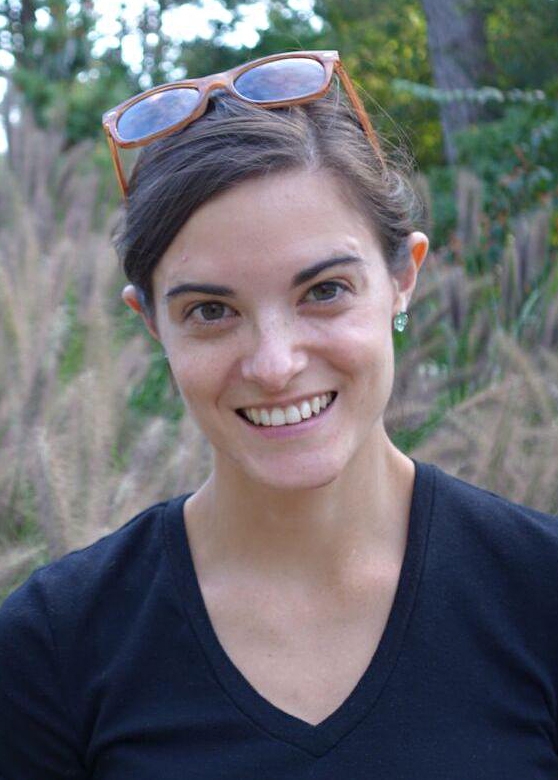
Today she's an assistant professor at the University of Pennsylvania and has found her calling.
She'll be speaking on "The Conflict Beneath Your Feet: Indirect Effects in Plant-Symbiont Interactions" at the Wednesday, May 18th virtual seminar hosted by the UC Davis Department of Entomology and Nematology.
Her seminar begins at 4:10 p.m. The Zoom link: https://ucdavis.zoom.us/j/99515291076
"My lab studies the ecology and evolution of host-symbiont interactions," Wood says. "We're especially interested in the causes and consequences of conflicts that arise as hosts navigate interactions with multiple partners. I will talk about three recent projects in my lab that explore how antagonists affect host-symbiont interactions in the model mutualism between legumes and nitrogen-fixing bacteria."
As an evolutionary biologist, Wood says she is interested in the evolutionary ecology and evolutionary genetics of species interactions. Her research interests include ecology and biodiversity, plant biology, evolution and genetics, epigenetics and genomics.
Wood holds a bachelor of arts degree in English literature (2008) from Swarthmore (Penn.) College. She received her doctorate in biology from the University of Virginia in 2015. Her dissertation: "The Consequences of Environmental Heterogeneity for Fitness, Selection, and Inheritance." Wood served as a postdoctoral fellow at the University of Toronto from 2015 to 2018 before accepting a faculty position at the University of Pittsburgh.
She joined the University of Pennsylvania faculty in July 2020, right in the midst of the COVID-19 pandemic.
In her new faculty profile, Wood writes: "Our research is driven by two big questions: When do these cascading effects constrain adaptation in species interactions, and how do they influence the assembly of host-associated communities? We use plants (mostly the legumes genus Medicago) and their microscopic root mutualists and parasites to tackle these questions, drawing on approaches ranging from quantitative genetics to population genomics to field ecology in wild plant populations." Medicago is commonly known as medick or burclover.
What books should an evolutionary biologist read? "I loved The Beak of the Finch by Jonathan Weiner," she relates in the profile. "It's essentially a chronicle of Rosemary and Peter Grant's beautiful work on Darwin's finches, interwoven with the history and fundamentals of evolution by natural selection. I read it when I was a junior in college and was hooked: at the time, I was an English major, but the next semester I registered for my first upper-level biology class. That book is part of the reason I'm an evolutionary biologist today."
Access her talk on Wednesday, May 18 to learn more about her and her research.
Nematologist Shahid Siddique coordinates the UC Davis Department of Entomology and Nematology seminars. He may be reached at ssiddique@ucdavis.edu with any technical issues involving Zoom.
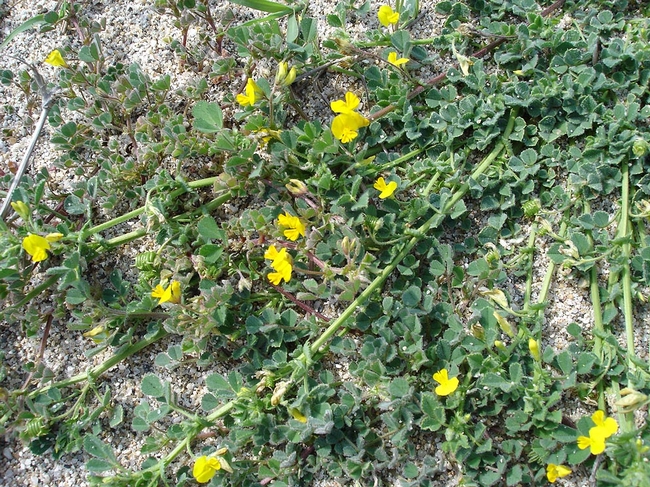
- Author: Kathy Keatley Garvey
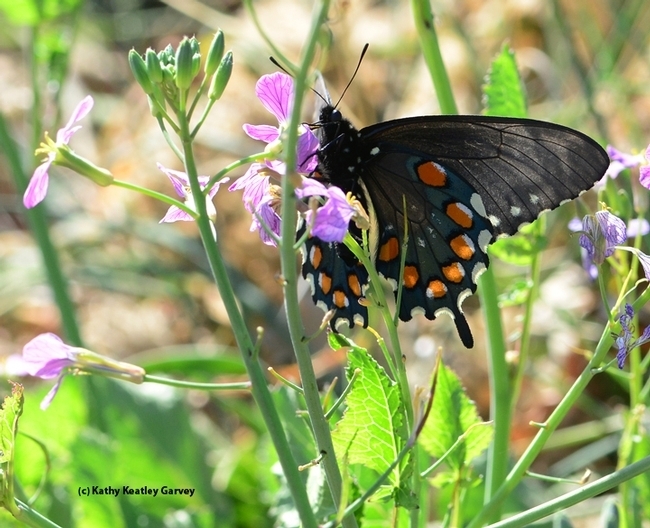
"Weeping Rocks" will showcase the 50-year research of butterfly guru Art Shapiro, a UC Davis distinguished professor with the Department of Evolution and Ecology, College of Biological Sciences.
The full-length documentary will be produced by 2010 UC Davis alumna Jackii Chun.
As you may know, Shapiro has been studying the butterfly populations at 10 sites in Central California since 1972 and is drawing global attention. He maintains a research website, Art Shapiro's Butterfly Site, aka Art's Butterfly World, where you'll find his work on scores of butterflies, from those majestic monarchs, Danaus plexippus, to those not-so-majestic cabbage white butterflies, Pieris rapae, (larvae of the cabbage whites are pests of cucurbits).
Anderson relates that Weeping Rocks is in production and funds are being raised on Kickstarter. It could be released as soon as 2023.
"The documentary looks at climate change through scientific research of those who study insects," Anderson writes, adding that he "has been counting butterflies for 50 years. His long-term data points to disturbing decreases in butterfly abundance across California. The name of the film comes from a site in Nevada County that drips water constantly, producing a lush, tropical effect — and attracting butterflies."
The film's director, Karlis Bergs (his previous film, Threshold, focused on bees) told Anderson: "We use his research as the backbone of the story about insects and people who work with them. His story is [interspersed] with shorter segments on other researchers. It creates a bigger picture.”
Bergs, who met Shapiro in 2019 when he was a student at the California Institute of the Arts, remembers reading an article about him, got in touch with him, and began filming him on his sites. “He's an amazing man who is eager to share his knowledge with anyone who asks,” Bergs told Anderson.
That he is. We remember following Shapiro, huffing and puffing at times, up Gates Canyon in Vacaville on Jan. 25, 2014. It's one of his fixed routes at ten sites that range from the Sacramento River delta, through the Sacramento Valley and Sierra Nevada mountains, and to the high desert of the western Great Basin. "The sites," Shapiro says, "represent the great biological, geological, and climatological diversity of central California."
The North American Butterfly Monitoring Network (NABA) website praises his work: "Art Shapiro began monitoring 10 transects in 1972 and has been conducting bi-weekly monitoring of those sites ever since. He also monitors an additional site as part of NABA's Seasonal Count Program! Art's program is the longest continually running butterfly monitoring project in the world, predating even the British Butterfly Monitoring Scheme."
Coming soon....Weeping Rocks, "revealing the urgency to save insect species through long-term scientific research."
It can't happen soon enough.
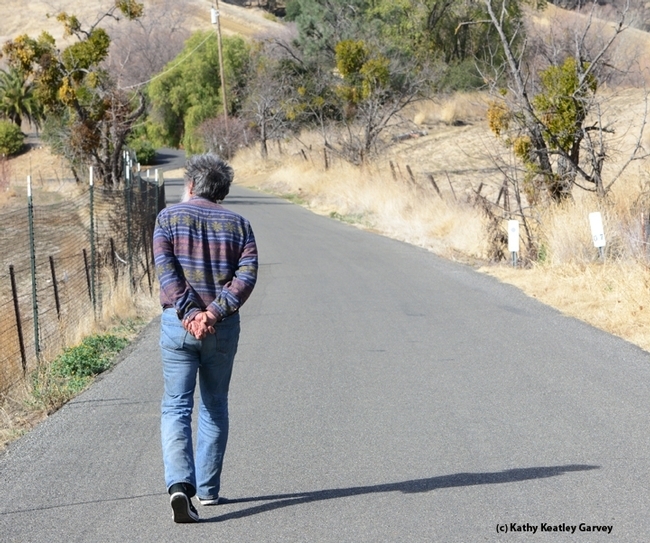
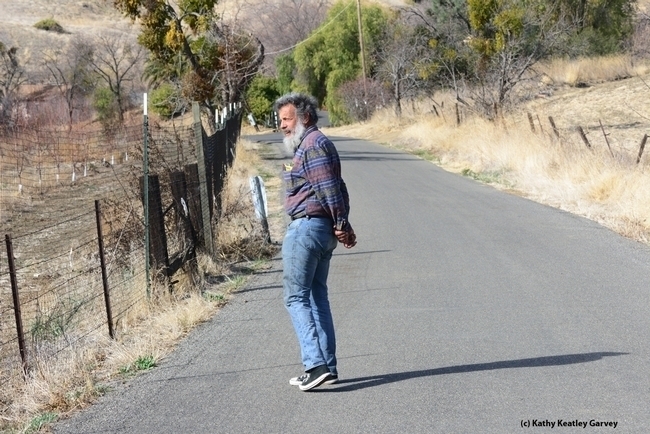
- Author: Kathy Keatley Garvey
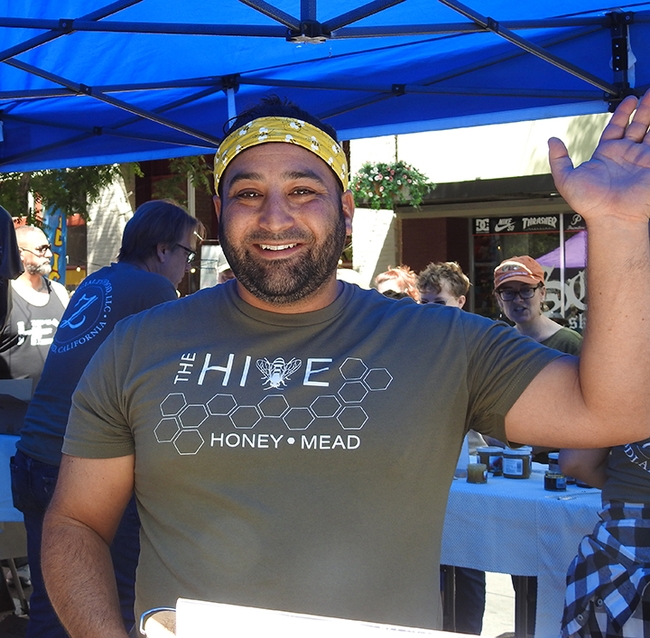
They came to taste the honey, learn about the importance of honey bees, check out the bee observation hives, and to engage with beekeepers and merchants.
And to photograph and "bee" photographed with the costumed "Queen Bee" Wendy Mather, program manager of the UC Davis-based California Master Beekeeper Program.
Amina Harris, director of the UC Davis Honey and Pollination Center and a co-founder of the California Honey Festival, explained what the honey flavor wheel is and invited the crowd to sample honey varietals.
Harris estimated the crowd at 40,000. "I got laryngitis," she said.
She also is the self-described "Queen Bee" of the Z Specialty Food/The Hive, Woodland. Her son, "nectar director" Josh Zeldner, also greeted the crowd at his booth. (They later hosted an after-party at The Hive.)
Claire Tauzer of Tauzer Apiaries/Sola Bee Farms and her worker bees talked about the wonders of bees, the merits of honey and offered visitors a taste of their honey. They displayed a bee observation hive. (See news story about the Tauzers).
Jer and Ellen Johnson of Uncle Jer's Traveling Bee Show, Elk Grove, entertained the crowd with shows throughout the day. Like the Tauzers, the California Master Beekeeper Program, Mann Lake Bee Supply and others, the Johnsons also showed festival-goers their bee observation hive, pointing out the three castes (queen, workers and drones) and the roles they play.
It was, as they say, a honey of a festival.
The event, launched in 2017, didn't happen in 2020 and 2021 due to COVID-19 pandemic restrictions.
But it buzzed back into Woodland last Saturday to a crowd absolutely craving camaraderie...and liquid gold.
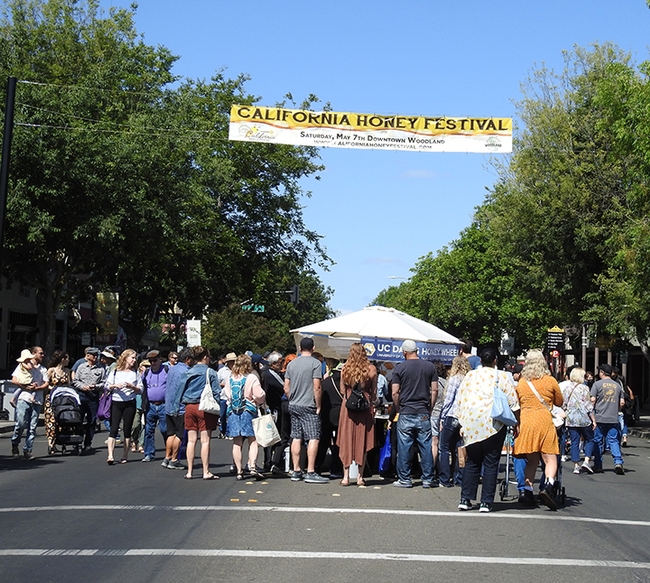
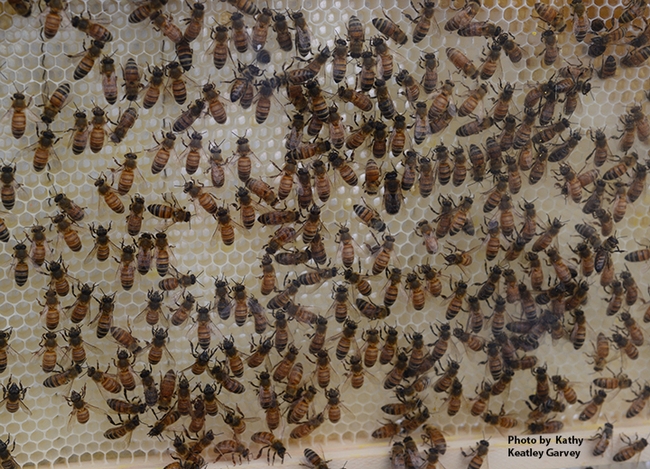
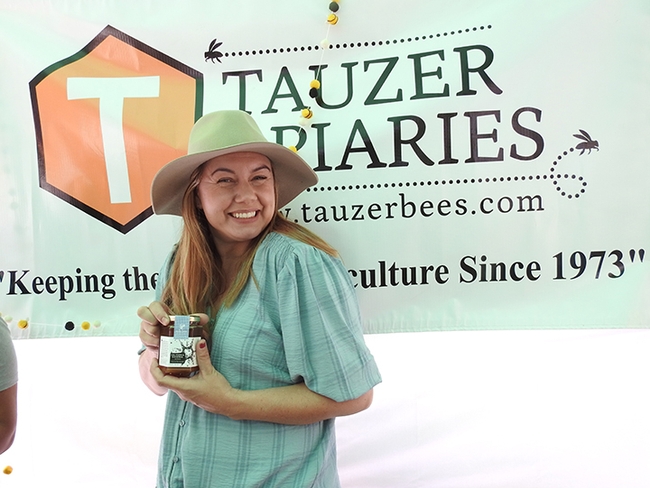

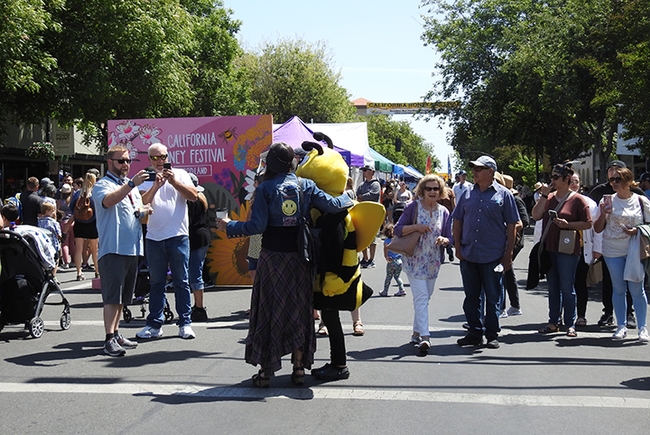
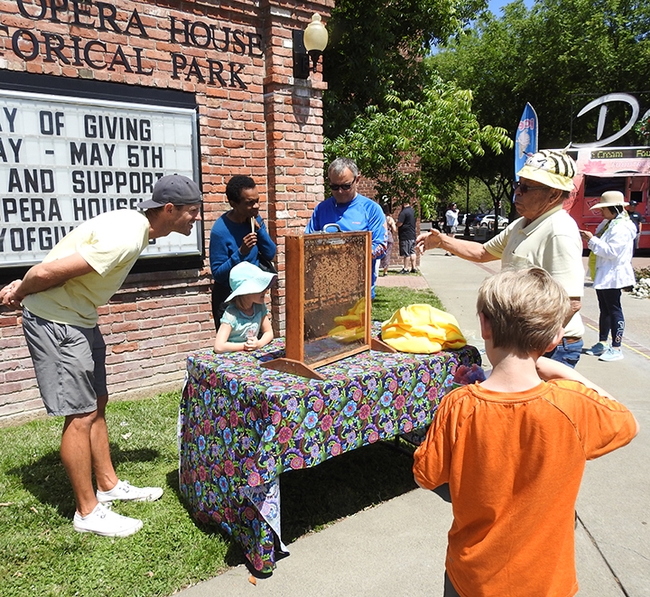
- Author: Kathy Keatley Garvey
Honey bees weren't the only insects at the 2022 California Honey Festival, held Saturday, May 7 in downtown Woodland.
Walking sticks, aka stick insects, grabbed some of the attention, too.
Officials at the Bohart Museum of Entomology, UC Davis, brought along display cases of bee specimens that showed the diversity of bees. They also brought along stick insects for visitors to hold and photograph.
UC Davis undergraduate students Lauren Spellman and Pichawi "Salee" Sangrawiakararat delighted in holding the Peruvian stick insects. Both are first-year students. Lauren is majoring in environmental sciences while Salee is undeclared. When someone suggested that Salee might consider majoring in entomology (science of insects), she smiled.
The Bohart Museum of Entomology, directed by Lynn Kimsey, UC Davis distinguished professor of entomology, houses a worldwide collection o 8 million insect specimens. It also includes a gift shop, stocked with insect-themed gifts such as hoodies, t-shirts, books, posters, and jewelry; and its popular live "petting zoo," comprised of Madagascar hissing cockroaches, stick insects and tarantulas.
The Bohart, located in Room 1124 of the Academic Surge Building on Crocker Lane, is newly opened to the public this spring after two years of COVID-19 pandemic restrictions. Groups must make reservations and everyone must follow the UC Davis visitor guidelines.
Upcoming weekend programs, free and open to the public:
- Saturday, May 28, 1 to 4 p.m.
"Bugs in Ag: What Is Eating Our Crops and What is Eating Them?" - Saturday, June 25, 1 to 4 p.m.
"8-legged Wonders" -
Saturday, July 16. 1 to 4 p.m.
"Celebrating 50 Years of the Dogface Butterfly: California's State Insect"
Local Spider Information (Essig Museum of Entomology)
